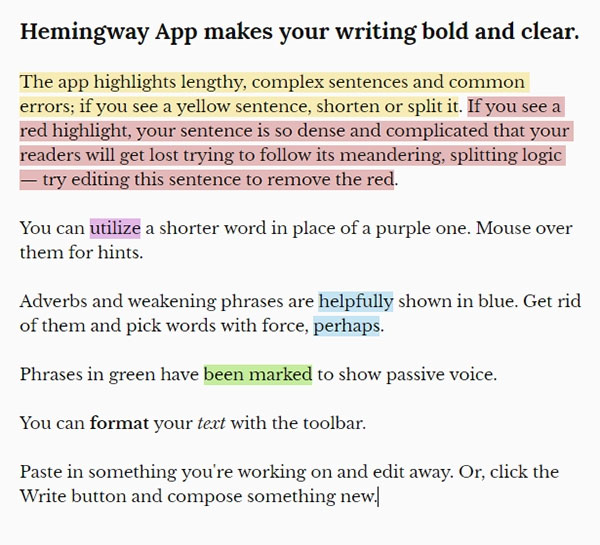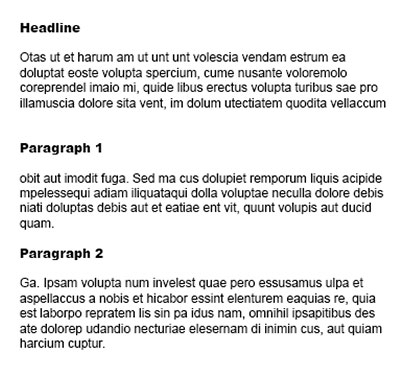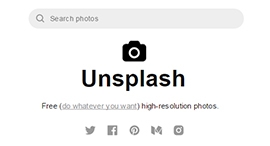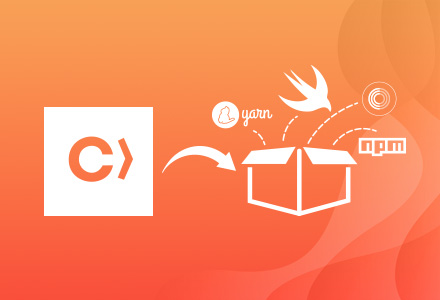Do you need to improve your content marketing?
Do you ever sit down to write and find yourself feeling like this?...
Well we're here to make it all much easier! Just follow our step by step guide to writing effective content and you'll have finished your blog before you know it.
Content is key to your digital marketing strategy. Creating an effective blog is one of the best ways to fill that content void.
It’ll boost your SEO, give you something to post on social media, and generate leads.
An interesting blog post can give users an alternative route to engage with your business. Every page view is an extra touch point that has the potential to grow into a lead.

While you may be passionate about your business, and you want to write about it, it’s tricky to know how to begin.
This guide will help you get your creative juices flowing and start writing a blog post. We’ve narrowed it down to 10 simple steps.
1. Types
To give you an idea of the types of blog post you can create, we’ve listed some of our favourites:
- How to – this style of post is a set of instructions on what a reader should do to achieve the goal outlined in the title. Write posts for your target audience, e.g. if you sell cleaning supplies, you could do a post on: ‘How to clean red wine stains.’ Not only will this style of blog post resonate with the user but it will also improve rankings and increase traffic as it will be a direct match for the user’s search i.e. a user is far more likely to search for ‘How to improve keyword rankings’ than ‘A guide to improving keyword rankings’.
- News – a news blog post is a fun way to compile recent news. It could be a roundup of the week’s Technology News, if your audience is related to the tech industry. It’s important to keep a close eye on trending topics so you can always identify articles that would be popular amongst users. There are tools online that can help with this; BuzzSumo is an extremely useful tool, designed to ‘find and the most shared content and key influencers’ within a specific field/industry.

- Lists – these are really popular and relatively quick and easy to create. It could be your Top 20 Fashion Trends or 10 Favourite Museums in Europe.
- Photo slideshow – awe your readers with stunning visuals. This type of post is focused on high-quality photos. If you’re a company involved in fashion, food or art, this is a great way to get people interested in your brand.
- Infographic – grab people’s attention and help users easily digest information using a visual format. You can make use of some great free online tools to help create effective infographics – Canva is a useful tool for designing and sharing infographics and other graphics to be used in blog articles and elsewhere online or in print.

- Guests – bring on a special guest and ask them relevant industry questions. This is a good way to create interesting content as well as backing it up with a reliable source.
Top tip: Choose the right style of post for your audience and mix it up so your readers don’t get bored of the same kind of content.
2. Choosing topics
It’s pretty obvious, but you’ve got to choose a topic. This is harder than it sounds. You’ve got to come up with an interesting idea that’s relevant to your business. Turn your topic of choice into a working title, something general that you want to say. This can keep you focused on the topic if you start going off on a tangent while writing.
E.g. if you’re a web designer you may want to do a post about bad web designs. Your working title could be ‘Mistakes to avoid in web design.’
You can worry about your finished title later.
Hubspot have a topic generator to give you some ideas.

It’s a good idea to plan out your blog ideas as part of your content strategy. Keep these topics in mind so that you can bookmark relevant articles when you come across them.
3. Do your research
It’s a good idea to know what you’re talking about. It’s important you do your research. Nobody’s coming back to a blog that’s inaccurate.
Finding secondary sources and data to support what you say will help you with your writing. Take note of any recent news articles and get in touch with industry experts. Ask your specialist staff to write a blog post. They’ll have the experience and knowledge to show-off what they’re talking about. Allow them extra time or create an incentive for them to get writing.
Know your audience. You’ve got to write posts that they want. With everything you write, you need to think:
- What do you want them to get from your post?
- Why should they keep reading?
If you wouldn’t read the article, why would they?
You know your business, so you will have an idea of what your audience wants.
Use any customer personas you’ve already identified in your marketing strategy.
4. Planning your post
Before you even think about putting pen to paper (or fingers on keys), you’ve got to properly plan what you say. You may be a business expert, but you're probably not a pro at articulating to your audience. The easiest way to plan is to outline each step or paragraph with subject headlines and jot down key points on what you plan to say.
Writing notes on those key points will help when it comes to finally writing your content.
You can also incorporate these as natural breaks, or subheadings, in the text for your reader, so they aren’t terrified of a wall of words.
5. It’s time to start writing
You’ve got your plan so take each section as it comes. Just let your thoughts and ideas flow and use your points and ideas to stimulate your writing.
Always leave the introduction and concluding points last, focus on the main bulk of text.
Your tone will depend on your business style. To be more readable, it’s best to attempt at friendly/conversational rather than formal and professional. A good way to do this is to write like you speak.
- Use contractions where possible: "You won’t" instead of "you will not."
- Start sentences with "And" or "But," - even if your instinct tells you otherwise.
- Write in an active voice and not a passive voice.
It’s not the end of the world if it’s not perfect at first. That’s where the next step comes in! Just make sure that your core ideas are there.
6. Edit
This is one of the most important stages for any writer. Check your spelling, punctuation, grammar, and make sure your writing flows.
A good tip is to print it off and then check it – you’ll spot mistakes you missed on screen (honest!)
Have someone else proofread your writing. A second pair of eyes makes all the difference, especially as they’ll be reading it more objectively.
Use the Hemingway App for a helpful readability tool. It scans your content and highlights complicated sentence structure for you to make it simpler.

7. Format
Break up large blocks of text with headers. White space is your friend – nobody wants the headache of staring at a text heavy screen.

Images are another great way to split up your content and make your post attractive. It will help your reader follow the content. You can make them informative or humorous, as long as they’re relevant
You can’t always have photographs taken for your business, so here’s a few free (CC0) stock photo sites that you can use:
- Unsplash – royalty free unique and artistic photos.
- Pixabay – includes photos, vectors and illustrations and has an advanced search bar for filtering results.
- Pexels – sources images from other free stock images sites, like Pixabay and Unsplash.
If you don’t own an image, double check that they’re free to use.



When you add an image to your post, make sure that you include an ALT tag. This improves accessibility and helps the search engine when it scans your page to understand the text.
8. Return to your title
Now it’s the daunting task of refining your title. A good headline draws a reader in. It’s arguably the hardest part. Your post is competing with thousands of others.
At this stage, you’ll have written your blog post and have a clearer idea of your direction than you did when you started.
If you find yourself in need of some inspiration, you can find plenty online! Take note when you come across titles you think are particularly effective, then try to rework them so they relate to your blog post (without directly copying). Otherwise, you can turn to free online resources for help, such as Tweak Your Biz, a free online title generator. All you have to do is type in your topic or keyword and hit search, Tweak Your Biz then generates a long list of suggested titles which are categorised so you can pick a title to match the type of blog you have written (Step 1) i.e How To, Lists, Questions etc.

It needs to be simple, clear and catchy – if you can incorporate any keywords for SEO then all the better! But, quality overrides the necessity for keywords.
There are useful tools online that you can use to perfect your title. For example, if you’re uncertain which words to capitalise you can copy and paste your title into a tool such as Title Case Converter and let your computer do the work for you.
Use any literary techniques you can remember (alliteration, rhyme and metaphor are just a few examples).
Don’t over complicate things though. Make it short and sweet.
You don’t want a title that’s a mouthful or has been made indecipherable by forcing in a keyword.
Check out our Top Tips for Writing Blog Headlines that Attract Readers.
9. Call to action
To help your readers to the next step of their customer journey, you should have a clear call to action at the end of the post. It can be a link to contact us, sign up to a newsletter, or download a guide. This will help you generate a lead.
Don’t make it difficult to share your posts to others. Make all your social media icons visible.
10. Sort out your SEO
You’ve finished writing. Success!
Now you need to clean it up for SEO. Scan your document and see if you can add in relevant keywords. Don’t overdo it though, as we pointed out when you wrote your title, your keywords need to fit in naturally. You don’t want to force them in to your text.
Don’t know what keywords to use?
Do some research into relevant ones.
Use Google’s Keyword Planner to research words and phrases and check the stats to get an idea of how they might perform.
Here's an example of what you'd get if you searched for Web Design:

Ready, set, go!
We’ve given you the tips you need to start writing your own blog posts – now it’s time for you to get creative.
Let us know what you produce and we’ll happily share them.






